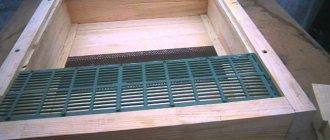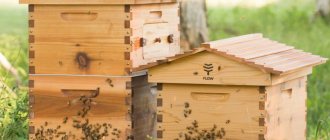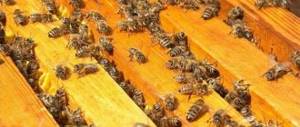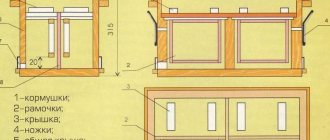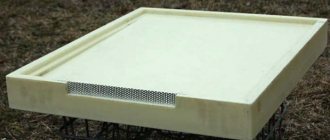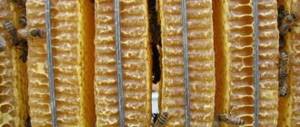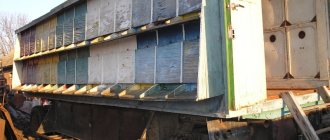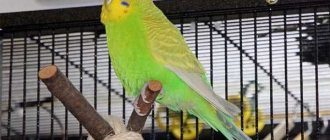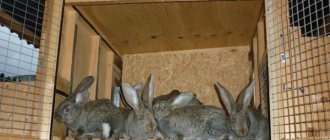Design Features
The Ukrainian hive is one of the most popular among beekeepers. Its structure is closest to the natural living conditions of bees, so they feel comfortable in it. The prototype of the Ukrainian hive was logs - houses for honey-bearing insects, which were made from logs by residents of Central Europe until the 19th century. The first beehive, which was later called Ukrainian, was made in the 1870s. Pole Kazimir Levitsky. Today, somewhat simplified designs are used.
A horizontal hive with a high frame is a simple rectangular structure containing from 16 to 24 frames. It has a roof and a bottom that cannot be removed. If necessary, it is separated by diaphragms and also additionally insulated. The main generally accepted frame dimensions are 435x300 mm.
Did you know? The domestication of bees occurred about 5-6 thousand years ago. People housed honey insects in primitive hives made of rods and boards, or in clay vessels.
- The design of the lounger has a number of advantages:
- ease of use;
- comfortable keeping of bees at any time of the year;
- minimal human intervention in the activities of honey insects;
- the possibility of keeping two bee families or one family with a nucleus in one hive;
- ease of making with your own hands;
- no additional extensions;
- one frame size.
- Among the disadvantages of the described design it is worth mentioning:
- Possibility of use only in small stationary apiaries;
- large dimensions;
- non-demountable design;
- inconvenience when staying in a winter shelter;
- insufficient air exchange during wintering;
- difficulties in growing families.
The history of the Levitsky hive
The designer of the design, Kazimir Levitsky, was born in Poland in 1847. From a young age, he began breeding bees, while simultaneously developing new designs for hives and auxiliary equipment.
The inventor visited a number of countries in Central and Southern Europe, and in the early 1880s. organized an experimental apiary with a small museum, on which there were hives of an original design, called the Warsaw ones. The products were distinguished by increased strength, were equipped with folding sides and a roof and ensured heat retention in the winter.
The bee entrances were equipped with metal flaps that were closed for the winter. Wooden linings were provided on the inner surface of the side covers, increasing the mechanical strength of the parts.
An additional board was located under the entrance to protect the internal volume from wet snow. The outer part was partially covered with straw, and the wooden elements were covered with a layer of oil paint, which protected the wood from rotting.
Levitsky’s design was widely used in private beekeeping, but after its creation in the 30s. Since the last century of collective farms focused on producing honey on an industrial scale, the popularity of products has decreased.
Hives are used to a limited extent in small apiaries because they do not require regular and labor-intensive maintenance. Experienced beekeepers are confident that Levitsky’s scheme provides increased quality of honey thanks to elongated frames reminiscent of the honeycomb of wild bees.
Rules for keeping bees in Ukrainian hives
In hives with narrow frames, when keeping two families or a family with a nucleus, in the spring it is necessary to provide them with a lot of food - about 8-10 kg per family, and the nests should be well insulated with pillows, mats, and paper.
It is important to take measures to prevent members of one family from ending up in another. To do this, strong families are first released. After they return to the hive, the entrances are closed and members of the weak family are released for the spring flight.
The nest is expanded once. The expansion should be done at the time the queen lays eggs. The procedure is carried out with light brown honeycombs. If there are 7-8 combs of brood, all combs must be moved to the wall located on the opposite side of the entrance. The space that is freed up should be filled with frames with drying material and wax in an amount of at least 5 pieces. To restore the normal position of the nest, honey insects will build honeycombs on the foundation, and they will not have time to swarm. Newly built combs are placed closer to the center of the nest. Old honeycombs are gradually moved closer to the edges.
Important! Before inserting frames with drying material, it is necessary to wet them in warm water.
To avoid swarming, it is necessary to divide the nest into 2 halves with two or three frames of dry land. Noticing this, the queen will try to reunite the nest by filling the comb with eggs. When the honey yield level exceeds 2 kg, the hive is supplemented with an extension with 10–20 frames. When the nest becomes crowded, the family should be moved to a separate hive.
Ukrainian hive
First, a little history. With the introduction of hive frames into the practice of beekeeping by P. I. Prokopovich (1814), and then by L. Langstroth (1851) and L. Berlepsh (1852), the efforts of researchers and practicing beekeepers were aimed at finding and justifying the most optimal frame sizes and their corresponding types of hives that provide the highest productivity of bee colonies.
Beekeepers' opinions were divided. L. Langstroth, S. Dadan, A. Ruth and their followers followed the path of introducing low-wide frames, that is, those in which the height of the frame is less than its width or equal to it. They believed that in this case the greatest strength of the honeycomb is ensured and a compact nest is created. Other beekeepers have preferred narrow frames that are taller than they are wide. They borrowed the idea of creating such frames from bees that lived in hollows, logs and nest boxes.
One of the most consistent supporters of the narrow frame was the Polish beekeeper Kazimir Levitsky. Measuring the dimensions of the honeycombs in the sides, K. Levitsky came to the conclusion that the width of the frame should
be 240, and the height is 432 mm. The hives he developed became widespread in Poland and Ukraine. The popularity of the Levitsky hive was facilitated by the ease of working with it. Neither second hulls nor extensions were needed. This was important for peasants who did not have sufficient knowledge about the life of bees. Serving families in these hives also did not require much time.
When assembling nests for the winter in Levitsky's hive, it was enough to leave six or seven honeycombs filled in the upper part with honey, and success was guaranteed. The bees form a club, the diameter of which approximately corresponds to the width of the frame. Rising to the ceiling in winter, the club has the opportunity to fully use feed reserves. It is simply impossible for him to get away from food, as in other hives. A narrow and long nest warms the bees well and promotes intensive development of the colony in early spring.
The huge variety of hives that had emerged by the beginning of the 20th century began to really constrain production and acutely raised the question of their standardization and unification. A passionate advocate for the standardization of frames and hives in Russia was the teacher of the Boyar School of Beekeeping in the Kyiv province V. Yu. Shimanovsky. He managed to convince the congress of beekeepers held in January 1918 in Kyiv to adopt uniform frame sizes for the entire country and recommend the main types of hives for them. The decisions of the congress were approved in 1921 by a special commission of representatives from central institutions at the Kiev provincial land department. The dimensions of the hive frames established by the congress are 435X300 mm; 435X230 mm; 435X 145 mm are strictly observed to this day.
As an alternative to the K. Levitsky frame (240X432 mm), the congress, after long discussions, adopted the “reverse” Dadan frame (300X435 mm), calling it, at the suggestion of I. I. Korablev, Ukrainian and the hive for it - Ukrainian.
The first description of the Ukrainian hive was made by V. Yu. Shimanovsky in the magazine “Beekeeping” No. 1, 1923 and in more detail in his book “First steps in setting up an apiary” (1927).
According to V. Yu. Shimanovsky, this Ukrainian hive (Fig. 1) consists of a body, a roof, two diaphragms, 16 nesting frames and an integral bottom. The case length is 686 mm, width - 381 and height - 507 mm. The thickness of the front and rear walls is 33, side and bottom - 28 mm. The walls and bottom are assembled from separate plots, joined together into a strip with glue. At the corners the walls are connected into quarters.
In the right wall of the case at the bottom there is an vent 115 mm high, closed with a special lid (bushing). On top of the outer edge of the body, a rebate 6 mm deep and 16 mm wide was selected for installing the roof edging, and on the inner edge of the front and rear walls, a rebate 8 mm wide and 22 mm deep was chosen for the hangers of the frames.
A taphole 15 mm high and 160–200 mm wide is cut into the front wall. It is shifted to the left of the center, covered with a mesh that folds down and also serves as an arrival board. Depending on the beekeeping method used, one or two more holes can be made in the hive.
The roof of the hive is single-pitched, attached with hinges at its high side to the front wall of the hive. The roof consists of a frame and a shield. The walls of the trim are connected to each other in a quarter. The thickness of the longitudinal walls is 33, the side walls are 28 mm. The shield is assembled from boards 22 mm thick, joined together into a batten. Ventilation windows 15 mm high and 100 mm wide are cut into the side walls of the frame, barred from the inside with a mesh. The top of the shield is covered with roofing sheet with edges curved downwards.
The Ukrainian hive is equipped with 16 frames (300X435 mm) without permanent dividers. The top bar measures 330x22x8 mm, the bottom 312x12x8 mm and two side bars 419x22x8 mm. The dimensions of the hangers of the knocked together frames are 115 mm. The bottom strip is nailed to the end of the side strips and protrudes from the sides by 6 mm, forming wall dividers.
Diaphragms serve to limit the nest, and, if necessary, to separate two families. Each diaphragm provides a shield made of individual planks 13-20 mm thick. It is suspended in the hive using the top bar on the quarters of the body. The diaphragm fits closely to the walls of the hive, and is 10 mm away from the bottom. When transporting bees, the side sleeve is replaced by a frame with a mesh through which ventilation is provided.
In the literature you can find descriptions of Ukrainian hives that are somewhat different from the above. Currently, in accordance with the republican technical conditions, a hive with a Ukrainian frame is produced in Ukraine with insulated front and rear walls and an integral bottom.
It is designed for 20 nesting frames (435X300 mm). The side walls and bottom are 35 mm thick. Front and rear - double internal walls are made of boards 25 mm thick, external - 15 mm. The space between the walls is filled with insulating material - straw, shavings, etc. The front wall is equipped with two lower and two upper tap holes (Fig. 2). On the left side wall there is a lower entrance for a warm drift. The height of the tapholes is 12 mm.
In conclusion, I would like to make a few critical remarks about this hive.
K. Levitsky also noticed that the formation of increased temperature and humidity in the upper part of the nest during bribes forces the queen to lay eggs abundantly, and encourages bees to swarm.
Further, elongated honeycombs are undoubtedly less durable and less well attached to the bars.
Ventilation windows in the roof frame that are barred from the inside and the barred sleeve are clogged by bees during transportation.
Advice from experienced beekeepers
To make keeping bees in Ukrainian hives comfortable for both the owner and the insects, you should follow the recommendations of experienced beekeepers:
- Extend the expansion in 2-3 times: with 6-7 frames with brood, deliver 2 frames with honey and 2 with artificial foundation; after filling them, add 4-5 frames, 3 of which with foundation; if necessary, add the required number of frames before honey collection.
- Expanding the nest by dividing it into 2 parts should only be done in a strong family and in the absence of the threat of cold weather.
- Before the main honey collection, it is necessary to regroup the frames by concentrating all the frames with open brood and the queen near the entrance, and the combs with printed brood - in the depths of the nest.
- It is not necessary to equip hives with extensions if the colony begins to swarm and lays queen cells on the combs.
- To save labor during the late honey harvest, it is necessary to form a temporary layer. Formation is started after the family has grown 11-12 frames, 8-9 of which will be occupied by brood.
- To prevent swarming, you need to use various methods: assistant queens, the Chaikin method, loading the bees with work, etc.
So, Ukrainian hives are simple structures for keeping two bee colonies or one colony with a nucleus. They are easy to use for the beekeeper and comfortable for the bees to live in.
Did you know? The most ancient remains of a bee, which have been found by paleontologists today, date back to a period of 100 million years ago. They were dug up in Burma. The insect was a transitional form from the predator wasp to the pollinating bee.
Rules for keeping bees
When setting up an apiary, the following rules should be observed:
- For every 100 m² of territory, 2 hives are allowed.
- Products are placed at a distance of 2 m from each other and at a distance of at least 3 m from the fence marking the boundaries of the site. A wooden or metal fence with a height of 2 m is placed along the perimeter of the territory, which does not allow bees to fly into neighboring lands.
Before starting to organize an apiary in an area built up with private houses, it is necessary to familiarize yourself with the regulatory documents adopted by general meetings of house owners.
The charters of some dacha cooperatives prohibit the placement of beehives on the territory. If there are no restrictions, then it is recommended to provide a drinking bowl for insects on your site, which will reduce the risk of conflicts with neighbors.
Winter supplies in a narrow hive
A special feature of the design is that food for insects is placed on top above their heads. This is correct; in winter, bees prefer to move from bottom to top, so they will be fully fed. Often in ordinary hives, the family does not gather into a club correctly, the bees begin to crowd each other, so they do not fully feed on honey. They cannot move away from the club, they begin to freeze. In this case, the amount of honey does not matter; if it is placed inconveniently for them, they will die.
A narrow high hive provides for this problem; the food is placed on long, narrow paths, the bees cannot leave them.
You can see the design features in more detail in the drawing.
Drawing “Construction of a narrow high hive”
Varieties and advantages of other types of hives
Advantages of the beehive over other models
- there is no need to rearrange the overall structure and honey extensions;
- Layings can be made next to the main bee colony;
- ease of use of the frame;
- good development of bees in beds and simple implementation of measures to insulate the hive.
In addition to the classic lounger hive, there are the following varieties:
- Alpine - has a compact design, where the development of the bee colony occurs in the vertical direction. The inner part, with a place for bees, is made in the form of a hollow. There are no partitions, ventilation is carried out naturally, through the entrance;
- Cassette type . Its peculiarity consists of thin partitions that provide bees with a favorable microclimate. The main goal is to create conditions that reduce insect disease, so the walls are coated with wax;
- Ruta - used only in the southern regions from a special design that requires constant rearrangement of stores, which leads to heat loss;
- The Ukrainian lounger is suitable for beginners and is easy to use. Simple design and insulated side walls. Bees produce honey well;
- The Dadanovsky hive is the most popular model among beekeepers. Its design is compact, designed for 12-16 frames; in winter, bees are kept in the nesting section.
Pros and cons of the Ukrainian hive
Pros:
The design has a narrow bottom in projection, which is closer for bees, especially wild ones, than hives with a wide bottom, such as the Dadan-Blatt, Ruta, Classic Lounger hives, but worse than the Varre, Roger Delon hives and so on.
Ukrainian hives do not contain removable parts, except for frames. The frames are secured with a crossbar for transportation. That is, such hives can be easily moved and transported without worrying about securing removable parts.
The hive is as convenient as a classic beehive for forming layers next to the main colony. Layers can be formed simultaneously with the settlement of the main family. To do this, a diaphragm is used to fence off a place for the family and for the breeding.
It is precisely because the hive is very easy to divide into 2 parts with a dividing board that such hives are very common for breeding queens and breeding new families.
Ukrainian hives-loungers also performed well for the winter season. Two families can winter in them at the same time, warming each other and thereby reducing feed consumption.
As in a classic lounger, even women and children can practice beekeeping in such hives. They won't have to carry heavy bodies. They simply aren't there. Therefore, such structures are often used in backyard apiaries.
Minuses
A strange and non-standard frame for most apiaries.
Difficulties with purchasing bees and transplanting them from standard package frames to such an unusual frame. To install dadan frames with brood in the hive, you will have to place them in a special adapter and across the main ones.
Since the hive is not collapsible and is quite large, it will take up quite a lot of space.
The amount of space under the frame for these hives is smaller than for hives with a standard frame. This can have an effect during wintering, when a large amount of dead fish falls to the bottom. Bees can deprive themselves of air flow and die.
The nest is located horizontally, as in a classic hive-lounger. Bees are reluctant to move in width; it is more natural for them to develop in height.
General verdict of the Ukrainian beehive: Exotic and a relic of the pre-revolutionary era of Polish beekeeping. It is not applicable in large apiaries, in private gardens - as a tribute to fashion or the heritage of ancestors.
